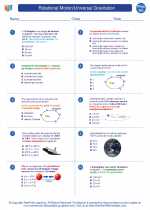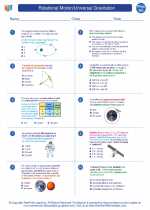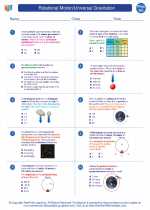Interference in Physics
Interference is a phenomenon that occurs when two or more waves meet and interact with each other. This interaction can result in a variety of effects, depending on the nature of the waves and their relative phase.
Types of Interference
There are two main types of interference: constructive interference and destructive interference.
Constructive Interference
Constructive interference occurs when two waves meet and their amplitudes add together. This results in a wave with a larger amplitude than either of the original waves. In the case of light waves, this can result in brighter light or more intense colors.
Destructive Interference
Destructive interference occurs when two waves meet and their amplitudes subtract from each other. This results in a wave with a smaller amplitude than either of the original waves. In the case of light waves, this can result in dimmer light or even complete darkness.
Applications of Interference
Interference has a wide range of applications in physics, engineering, and everyday life. Some of the key applications include:
- Optical Interference: Interference is the basis for many optical devices, such as interferometers and anti-reflective coatings.
- Audio Interference: In sound waves, interference can result in the phenomenon of beats, as well as various effects in music production and acoustic engineering.
- Radio Interference: Interference plays a crucial role in radio communication and the design of antennas and receivers.
- Quantum Interference: In the realm of quantum mechanics, interference is fundamental to phenomena such as the double-slit experiment and the behavior of particles at the nanoscale.
Study Guide for Interference
If you're studying interference in physics, here are some key topics and concepts to focus on:
- Wave Interference: Understand the principles of wave interference, including the conditions for constructive and destructive interference.
- Superposition: Learn about the concept of superposition, which is essential to understanding how waves combine and interact.
- Mathematical Representation: Familiarize yourself with the mathematical representation of interference, including the use of wave equations and phase differences.
- Applications: Explore the various applications of interference in different branches of physics and engineering, and understand how interference principles are utilized in these contexts.
- Experimental Demonstrations: Look for opportunities to observe interference phenomena in real-world or laboratory settings, such as through the use of interferometers or simple wave demonstrations.
By mastering these key aspects of interference, you'll develop a solid understanding of this important phenomenon in physics and its wide-ranging implications.
.◂Physics Worksheets and Study Guides High School. Rotational Motion/Universal Gravitation

 Worksheet/Answer key
Worksheet/Answer key
 Worksheet/Answer key
Worksheet/Answer key
